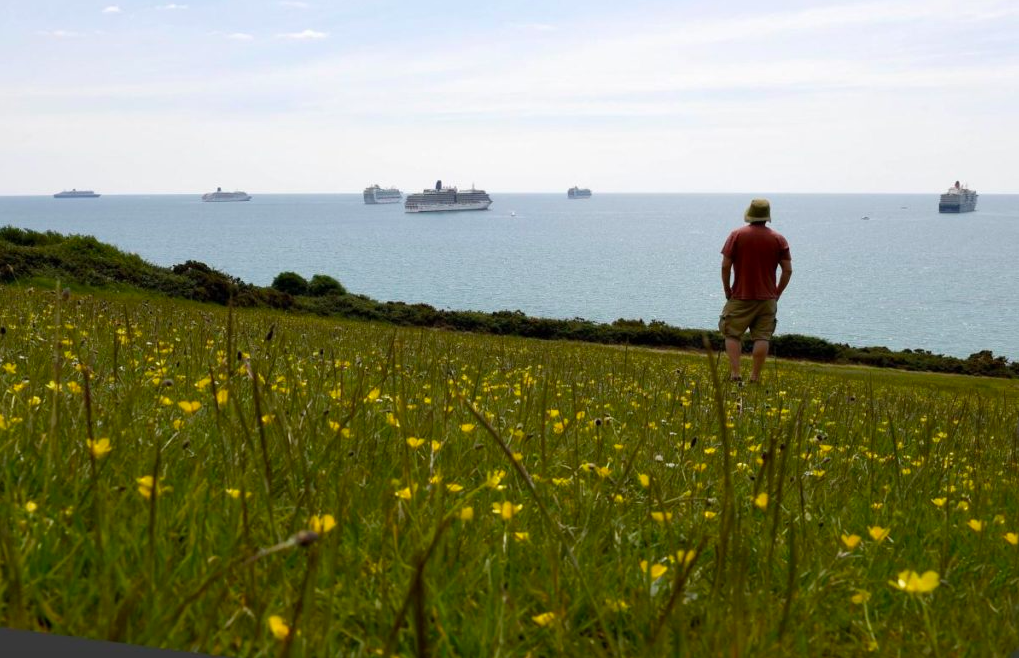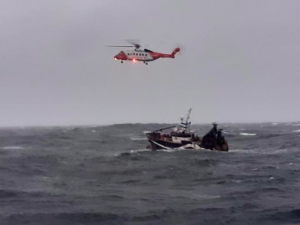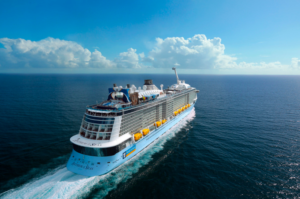Cruise ships suffer anchor losses off South Coast, says MAIB

Cruise ships anchored off the South Coast have suffered ‘anchor losses’, the Marine Accident Investigation Branch has revealed.
It’s urged captains to raise anchor and take their vessels out to sea rather than risk the chains tearing in rough seas and gusts.
MAIB says it’s concerned about the number of marine incidents involving cruise ship anchor systems’ failures and has issued a safety bulletin to highlight the dangers.
MAIB says this is a direct result of Covid-19, which forced the international cruise industry into an operational pause and many cruise ships anchoring of the UK’s south coast for long periods of time.
Incidents occurred while cruise ships tried to ride out winter storms. One cruise ship lost both its anchors within a week.
The conditions are far worse than where they would usually anchor, says MAIB, in areas with significant tidal streams and currents. Such operations are accelerating the wear rate of the anchoring equipment and in adverse conditions are exceeding the design limits of the anchoring systems. Failures have occurred in joining links, anchor chain common links, D-links and across the anchor crown causing the fukes to be lost.
Most frequently reported, says MAIB, is the failure of the joining links connecting two shackles of cable, often when a significant amount of cable was out, in some cases as much as 11 shackles on deck. Although the additional weight of the cable can prevent the vessel dragging anchor, in adverse conditions it will also increase the forces acting on the cable and anchor.
When combined with the significant yawing caused in high winds, and cable lying unused in a chain locker since the last time it was end for ended, it is unsurprising that several anchor equipment failures have occurred, says MAIB. The issue is further exacerbated when the scope of cable remains constant, causing a single point of loading and wear, for example, where the cable is in contact with the hawse pipe. The indications are that anchor equipment has been failing due to operational issues rather that fabrication defects.
MAIB’s safety lessons
MAIB says there are four key steps which cruise ships can take.
Operational limits for anchoring must be sufficiently cautious to ensure weighing anchor is not left too late, risking overloading anchor equipment. If strong winds are forecast, proactive action should be taken to seek a more sheltered anchorage in good time or proceed to sea and ride out the weather. Cruise ships should not wait until the anchor drags or until most of the anchor cable has been paid out before weighing anchor.
Steps should be taken to minimise the wear on the anchoring equipment as far as possible. When the opportunity presents itself, the anchor in use should be rotated and the scope of cable varied on a regular basis to minimise single point loading. An appropriately experienced crew member should also carry out regular checks on the windlass brake condition and areas where the cable is in contact with the ship.
While at anchor for significant periods, all watchkeepers should be confident in the actions to take in the event of dragging or losing an anchor. There needs to be a contingency plan ready for implementation in the event of having to proceed to sea or re-anchor. Also, watchkeepers and senior officers must be aware of the reporting requirements to the coastal state in the event of losing an anchor so that mitigation measures can be put in place if required.
As the restrictions on the cruise industry ease, MAIB says, it must be remembered that this period of prolonged anchoring may have decreased the life span of the anchoring equipment. A full assessment of the future suitability of the anchoring equipment should be undertaken at the earliest opportunity or the next dry-docking period.
Strength of equipment
The strength of anchoring equipment is defined by ship Classification Rules and it is intended for temporary mooring of a ship within a harbour or sheltered area, says MAIB. In good holding ground, the anchoring equipment should be able to hold the ship to a maximum wind strength of 48 knots in ‘flat’ water, but this reduces to a maximum of 21 knots wind strength in seas with a significant wave height of 2m.
The International Association of Classification Societies (IACS) advises that the anchoring equipment is not designed to hold a ship off fully exposed coasts in rough weather, or to stop a ship that is moving or drifting. In these conditions the loads on the anchoring equipment increase to such a degree that its components may be damaged or fail due to the high energy forces generated, particularly with ships with high windage.
Main image illustrates the size and number of cruise ships anchoring off the south coast.












Guys,
Classification Rules define the strength of anchoring equipment for temporary mooring of a ship.
Large yachts typically spend a lot of time at anchor, often in less than ideal conditions. From experience SEMarine find installed equipment which may satisfy Class rules to be inadequate in terms of strength and ground holding ability by yachts. For this reason when drawing up specifications for a yacht it is important to specify larger equipment. We insist on anchoring equipment one size larger than required by Class.
Be aware some Classification Societies, DNV GL included allow lighter anchoring equipment for yachts. I believe this is wrong.
Best regards
Simon England